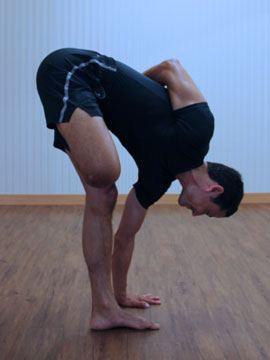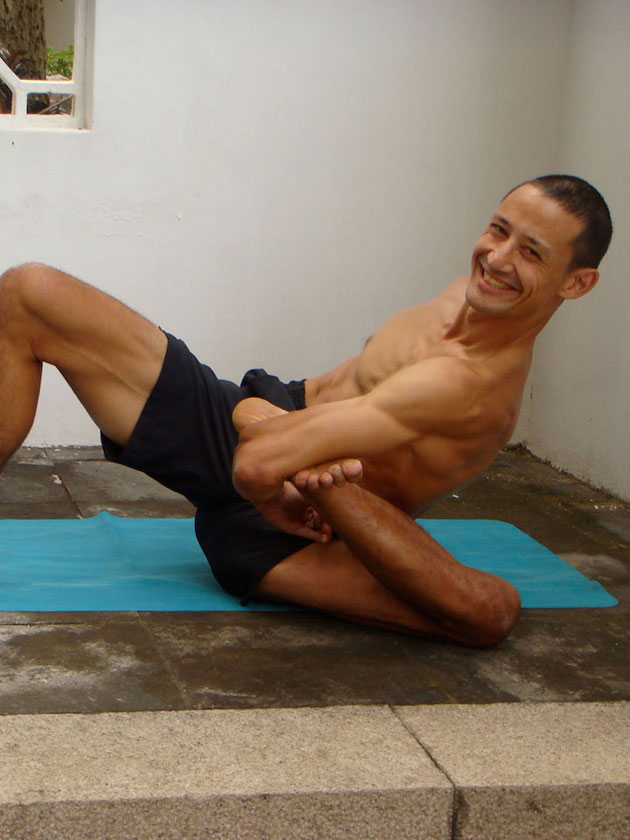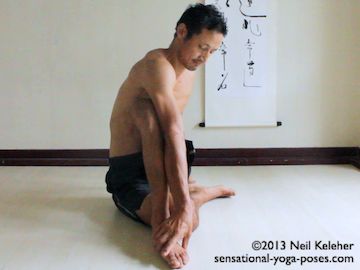Binding Yoga Poses
Using the strength of one part of the body against another
On page cat links
Ardha matsyendrasana, Armpit pose, Bharadvajasana, Binding, Compass pose, Half bound lotus seated forward bend, Half bound lotus standing forward bend, Hamstring stretch, Marichyasana, Marichyasana a, Marichyasana b, Marichyasana c, Marichyasana d, Side angle, Side angle bound, Twisting, Twisting side angle bound
In general, binding yoga poses are those where one part of the body grabs and pulls against another part. So for example, if you are grabbing the big toe or side of the foot, that's a bind.
Binding poses allow you to use the strength of one part against another. So if grabbing a foot, you can use your arm muscles against your leg muscles.
It's worth noting that because of the way that you connect limbs when binding, the muscular strengthening action when binding is different than when doing a similar shaped pose that isn't bound. For this reason it can be worthwhile to practice both binding poses and poses that are similar in shape but non-binding.
Binding yoga poses index
Binding poses defined
Open twist binds
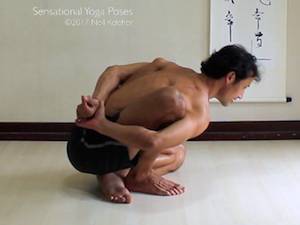
Modified marichyasana B
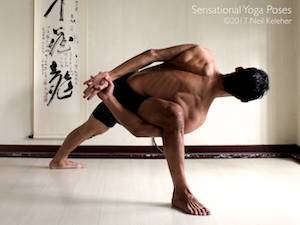
Bound side angle pose
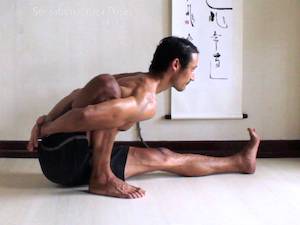
Marichyasana A pose
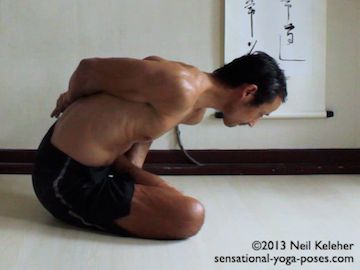
Marichyasana B pose
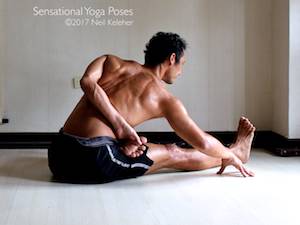
Seated bound half lotus
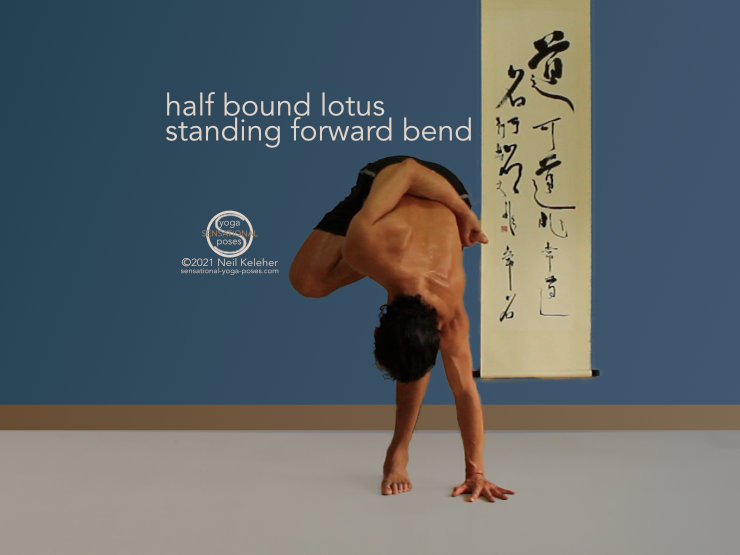
Standing bound half lotus
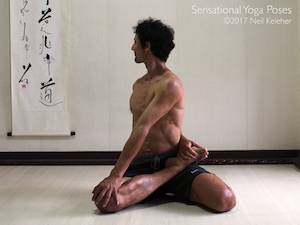
Bharadvajasana binding pose
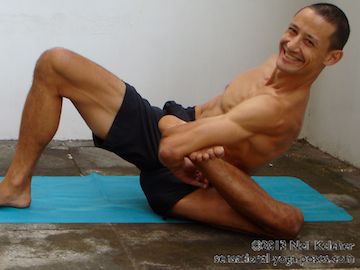
Armpit pose
Close twist binds
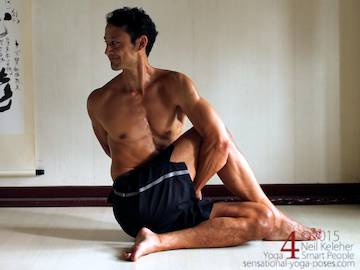
Variation: Ardha matsyendrasana
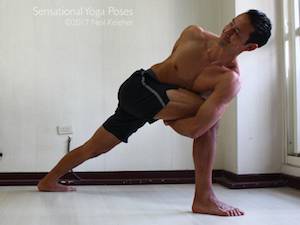
Bound twisting side angle
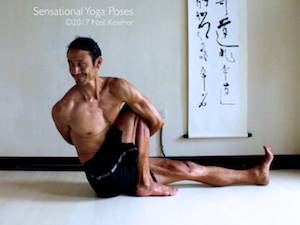
Marichyasana C yoga pose
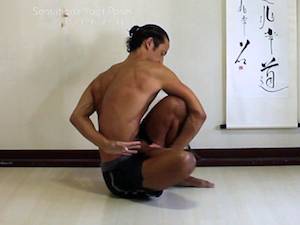
Marichyasana D attempt
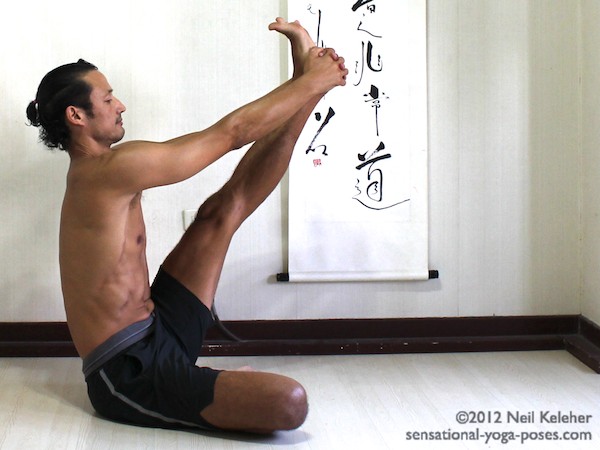
Compass yoga pose prep
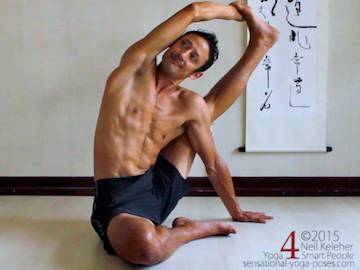
Compass yoga pose
Any pose where one part of the body presses against another body part could also be considered a binding pose. For example, in tree pose, a foot presses against the opposite thigh.
The key point about binding poses is it causes your muscles to act in different ways. If you press your foot against your thigh in tree pose, you get a different muscular activation than if you pull the foot away. If you clasp your hands behind your back and work at pulling them apart (or pushing them together), the muscular activation is different from that which occurs if you just reach your arms back.
For that reason, you may find it beneficial to practice both binding poses and their non-binding counterpart. Or practice one type of bind with an opposite bind for balance.
As an example, if you clasp the hands behind your back and work at pulling them apart, repeat the exercise with arms clasped in front of your body.
Many binding yoga poses are also spinal twists. Some aren't.
Spinal twists without binds are included in the spinal twist section.
The following binding yoga poses include leg binds and foot binds. In all cases the same side foot or leg is bound. This makes it easier to turn away from the bind, creating space.
In the usual marichyasana b position, the non marichyasana foot is in lotus position. InModified Marichyasana B it is not. This is a nice pose to practice the non-twisting marichyasana binding position without worrying about lotus pose.
Bound side angle pose is perhaps one of the easiest standing poses to bind in from the binding perspective. Holding the pose for awhile however, you may find your thigh starts to protest.
Binding in Marichyasana A requires a little bit of hamstring flexibility in the straight leg and hip extensor flexibility in the marichyasana leg. You'll also need the ability to internally rotate the shoulder of the binding arm.
Marichyasana B is a bit more difficult than marichyasana a because the non-marichyasana leg is in lotus position. That being said, at least you don't have to worry about having flexible hamstrings as you do in the A position.
Binding in seated half bound lotus, if you can do the lotus pose leg position relatively easily, then focus on creating length in order to bind easily. If you can't do lotus pose or have some difficulty with it, then half bound lotus yoga pose includes some preparation exercises that can help you work towards the lotus foot position without hurting your knee in the process.
Ardha baddha padmottanasana is a standing half bound lotus forward bend. I'd suggest that you may be better working towards this after having practiced the same pose while sitting, particularly if your balance isn't that good. Failing that, work at binding the lotus foot without doing the forward bend.
Bharadvajasana is one of my favorite binding twists. It can feel really good on the lower back, perhaps because of the way the forarm of the binding arm presses into the back corner of the lower back and waist.
Armpit pose is a somewhat ridiculous but fun binding yoga pose. If you can get the bind, then you can try hanging from the bind while resting on the knee of the bound leg. It can provide an interesting stretch for your shoulder.
The following binding yoga poses include leg binds and foot binds. In all cases the opposite leg is bound so that the twist is towards the bound leg.
There are a couple of ways to bind in Ardha matsyendrasana. The usual method is to grab the foot with the arm outside the leg as shown in the first photo. Another method is shown in the second photo above.
Bound twisting side angle is perhaps one of the more challenging of binding poses in general. Use caution when attempting it.
Binding in Marichyasana C can be challenging because it combines a closed twist with a bind that includes the thigh and lower leg.
I've only bound successfully in Marichyasana D a couple of times. I'd suggest working towards this binding yoga pose with extreme caution. The article Marichyasana D includes exercises to help you work towards this pose intelligently.
The following binding poses all involve a straight leg.
Compass pose prep can actually be used as a hamstring stretch as well as a shoulder stretch. Because you are grabbing the foot and can use your arms against your legs, it counts as a binding pose.
Compass pose is a natural progression of the previous pose. A key factor in straightening the leg is to gradually relax the shoulder of the binding arm. But actually, what you are doing is allowing particular muscles to lengthen while they stay active.
Published: 2012 06 01
Updated: 2021 01 24















